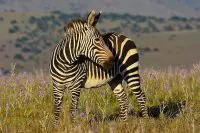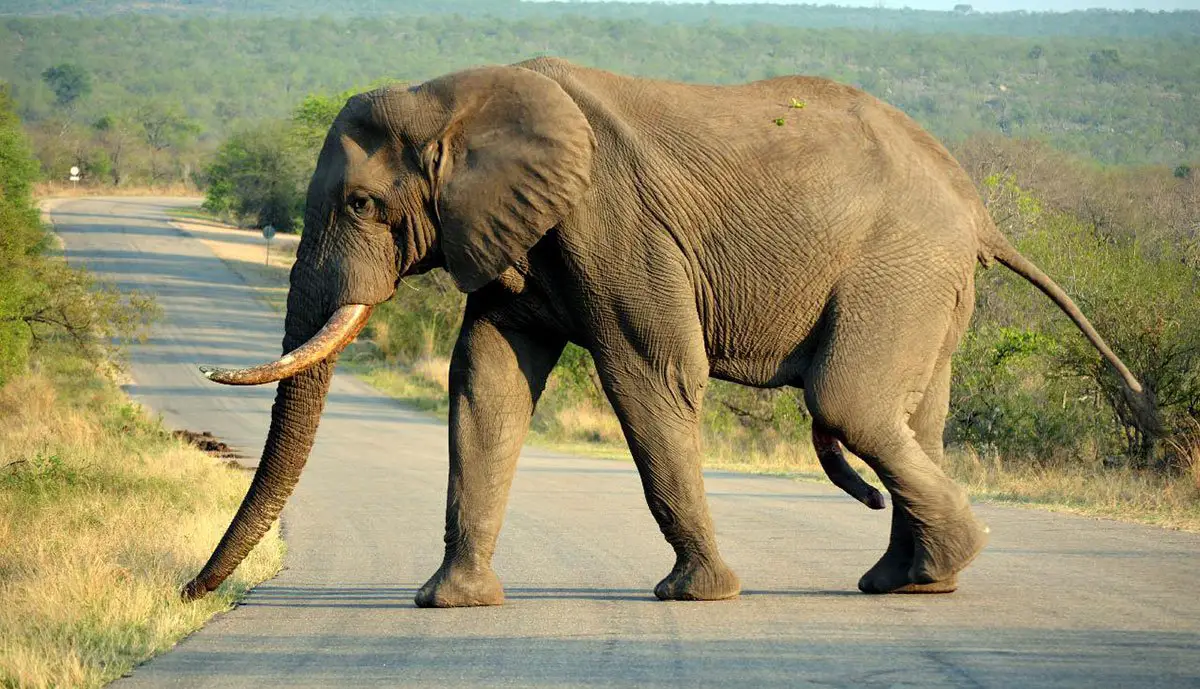The mountain zebra (Equus zebra) lives in the open grasslands of South Africa, Namibia and south-wester Angola. There are two subspecies of mountain zebra: cape mountain zebra, and Hartmann’s mountain zebra.
As is typical of a zebra, the mountain zebra has black and brown vertical stripes on its body. They are unique in every zebra.
The average body length of adult zebras is about 6 feet 11 inches to 8 feet 6 inches. Mountain zebras have 40 – 55 cm long tails.
They stand 3 feet 10 inches to 4 feet 11 inches tall at the shoulder. Mountain zebras weigh 450 – 820 pounds.
Females are bigger than the males.
Mountain zebras make  habitats on hilly areas, rocky, dry, open grasslands, mountain slopes, and woodlands. They likely breed in areas which are almost entirely covered with vegetation. Mountain zebras also prefer mountain terrains so that they can browse grass at will.
habitats on hilly areas, rocky, dry, open grasslands, mountain slopes, and woodlands. They likely breed in areas which are almost entirely covered with vegetation. Mountain zebras also prefer mountain terrains so that they can browse grass at will.
Mountain zebras are mostly most active during early morning till dusk. They eat grass, barks, leaves, and mineral licks. During the wet season the zebras can spend 36 hours without drinking.
They will make homes at an elevation of 3,300 feet above sea level but they do come down during winter.
Unlike plains zebras, mountain zebras do not live in large herds. They will form only small groups consisting of 1 – 5 individuals each. Adult males usually travel and eat alone.
The female zebra is called ‘mare’ and the baby zebra is known as ‘foal’. Mountain zebras fight either by biting each other or kicking.
The primary threats to the mountain zebra’s population is the habitat loss. Humans have long been involved in cutting down forests for agriculture. They also hunt zebras for meat.
Mountain zebras are present on the IUCN Red List as Vulnerable species. The estimated global population in the wild is around 2,700 individuals.





